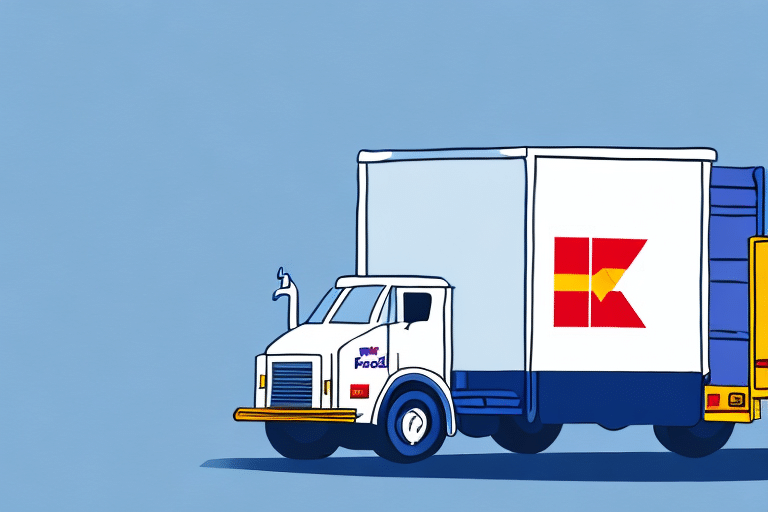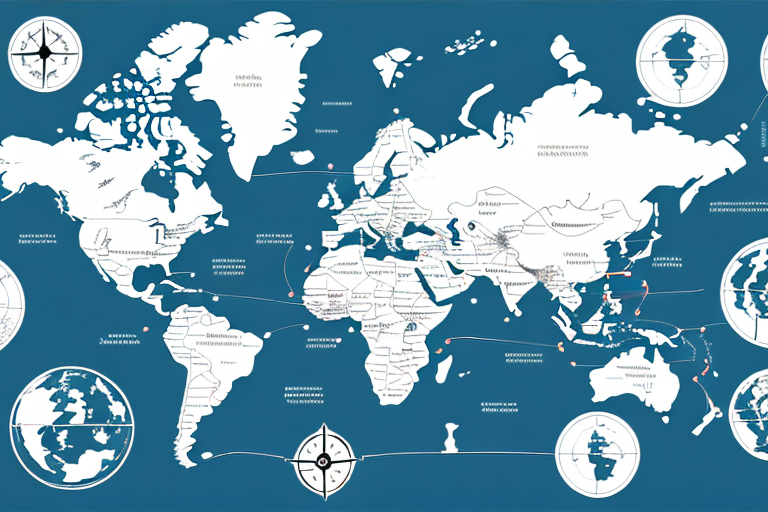Calculating Shipping Costs with FedEx: A Comprehensive Guide
If you run an online business, accurately calculating shipping costs is critical to your operations. Establishing a reliable system for determining shipping expenses that are both precise and cost-effective is essential. FedEx is a reputable option to consider for your shipping needs. In this guide, we will walk you through the steps to calculate your shipping costs with FedEx, helping you streamline your shipping process and minimize costs.
Understanding FedEx Shipping Zones and Rates
One of the primary factors influencing your shipping costs with FedEx is the distance your package needs to travel. FedEx divides the United States into eight different “zones” based on the distance between the origin and destination of a shipment. Zone 1 represents the closest proximity, while Zone 8 signifies the farthest. Generally, the higher the zone number, the more expensive the shipping cost.
It's important to note that shipping zones are dynamic and can vary based on specific origin and destination pairs. For instance, a shipment from New York to Los Angeles may fall under Zone 8, whereas a shipment from Miami to Los Angeles might be in Zone 6 due to the shorter distance.
In addition to distance, FedEx also considers the weight and dimensions of your package when calculating shipping costs. Accurate measurement and weighing of your package are crucial to avoid overpaying.
Impact of Distance on Shipping Costs
Shipping distance is a fundamental component in determining costs. According to the FedEx shipping zones chart, as the distance increases, the rate per mile typically decreases, but the overall cost rises due to the greater distance covered.
Weight and Size Considerations
FedEx uses dimensional weight pricing for larger packages that are lightweight. Dimensional weight is calculated by multiplying the package's length, width, and height and dividing by a dimensional factor (usually 139 for domestic shipments). Compare this with the actual weight to determine the billing weight.
Selecting the Right FedEx Shipping Options
FedEx offers a variety of shipping options tailored to different business needs, including standard, expedited, and express shipping. Selecting the appropriate option depends on your budget and time constraints.
Standard Shipping
Ideal for non-urgent deliveries, standard shipping is cost-effective for bulk shipments. Delivery times are typically longer compared to expedited options.
Expedited and Express Shipping
For faster delivery, expedited and express shipping options are available. These services come at a higher cost but are suitable for time-sensitive shipments.
Tracking Services
FedEx provides comprehensive tracking services, allowing you to monitor your shipment’s progress in real-time. Utilizing tracking can improve customer satisfaction by keeping them informed about their package's status.
Measuring, Weighing, and Packaging Your Shipment
Accurate measurement and weighing of your package are essential for precise shipping cost calculations. Additionally, proper packaging can help minimize costs and protect your items during transit.
How to Measure Your Package
Measure the length, width, and height of your package in inches. Multiply these dimensions to obtain the total cubic inches. FedEx uses this measurement to calculate dimensional weight, which impacts the shipping cost.
Calculating Dimensional vs. Actual Weight
Compare the dimensional weight to the actual weight of your package. FedEx charges based on whichever is higher. For example, a package with larger dimensions but lighter actual weight may incur higher costs due to dimensional weight pricing.
Packaging Tips to Minimize Costs
- Use lightweight and durable materials such as bubble wrap or packing peanuts.
- Pack items tightly to reduce the overall size of the package.
- Consider using FedEx's own packaging solutions which may offer cost benefits.
Utilizing FedEx Tools for Cost Efficiency
FedEx provides several online tools to help you estimate and manage shipping costs effectively.
FedEx Online Shipping Calculator
The FedEx online shipping calculator allows you to input package details such as weight, dimensions, origin, and destination to obtain an estimated shipping cost. This tool can help you compare different shipping options and choose the most cost-effective solution.
Tracking Tools
FedEx's tracking tools enable you to monitor your shipments in real-time. You can sign up for email or SMS notifications to keep both you and your customers informed about the delivery status.
Strategies to Save on FedEx Shipping Costs
Implementing cost-saving strategies can significantly reduce your overall shipping expenses with FedEx.
Signing Up for a FedEx Account
By creating a FedEx account, you gain access to discounted rates based on your shipping volume. FedEx offers several account types tailored to different business sizes and needs.
Negotiating Rates
If your business ships regularly, consider negotiating rates with FedEx. Demonstrating consistent shipping volumes can leverage better rates and service agreements.
Utilizing Third-Party Shipping Software
Third-party platforms like ShipStation and ShippingEasy can integrate with FedEx to provide discounts and streamlined shipping processes.
Managing Additional Fees and International Shipping
Beyond standard shipping costs, FedEx imposes additional fees and surcharges that must be considered to avoid unexpected expenses.
Understanding Additional Fees
Additional fees may include residential delivery charges, fuel surcharges, and handling fees for special items. Reviewing FedEx’s fee schedule can help you anticipate these costs.
International Shipping Considerations
When shipping internationally, additional factors such as customs duties, taxes, and import/export regulations come into play. Utilizing FedEx’s international shipping services can help navigate these complexities effectively.
Avoiding Common Shipping Cost Mistakes
Several common errors can lead to increased shipping costs. Being aware of these mistakes can help you manage and reduce shipping expenses effectively.
Incorrect Package Measurements
Inaccurate measurements can result in being charged higher dimensional weights. Always double-check your package dimensions before calculating shipping costs.
Inaccurate Weight Measurements
Underestimating the actual weight of your package can also lead to unexpected fees. Use a reliable scale to ensure accurate weight measurements.
Incorrect Zone Calculations
Miscalculating the shipping zone based on origin and destination can affect your cost estimates. Utilize FedEx's zone calculator to determine the correct shipping zone for each shipment.
Conclusion
Accurately calculating FedEx shipping costs is vital for the smooth operation of any online business. By understanding shipping zones, selecting appropriate shipping options, measuring and packaging correctly, utilizing FedEx tools, and implementing cost-saving strategies, you can reduce your shipping expenses and offer competitive shipping solutions to your customers. Avoid common mistakes and stay informed about additional fees to ensure a cost-effective and efficient shipping process.






















